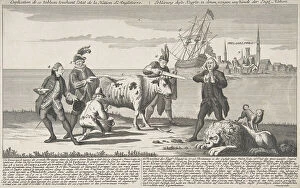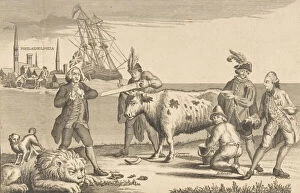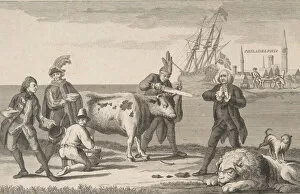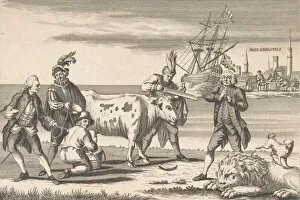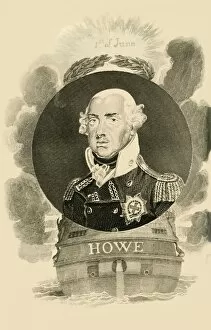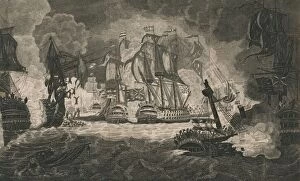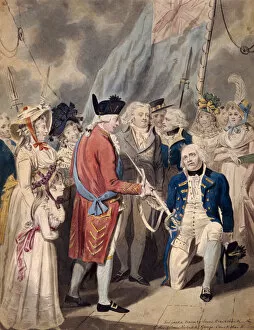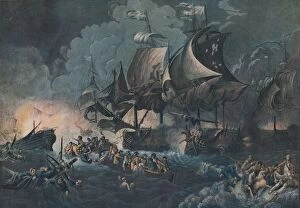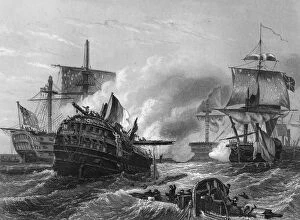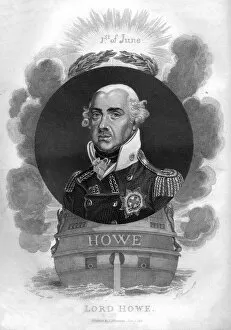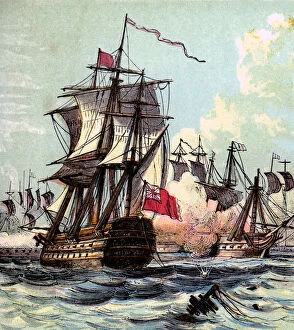Admiral Earl Howe Collection
Admiral Earl Howe, a prominent figure in British naval history, is depicted in various artworks and engravings from the late 18th to the early 19th century
For sale as Licensed Images
Choose your image, Select your licence and Download the media
Admiral Earl Howe, a prominent figure in British naval history, is depicted in various artworks and engravings from the late 18th to the early 19th century. One such piece, titled "Mal Lui Veut Mal Lui Tourne Dit Le Bonne Homme Richard, " captures the essence of his character and accomplishments. Created around 1780 by an anonymous artist, this artwork showcases Lord Howe's resilience and determination. Another notable depiction can be found in "State of the English Nation" from August 1, 1778. This work provides insight into his role during a crucial period for England's maritime power. The accompanying engraving titled "The Channel Fleet" further emphasizes his strategic command abilities. In January 11's artwork entitled "Uncle George and Black Dick at their New Game of Naval Shuttlecock, " we witness Lord Howe engaging in leisurely activities with fellow naval officers. It highlights his camaraderie with those under his command. Lord Howe's significant victories are also commemorated through artistic representations like "A View of the Engagement & memorable Victory. . on the 1st of June 1794. " Created by Christall, this engraving immortalizes one of Admiral Earl Howe's most glorious triumphs on the seas. Furthermore, Isaac Cruikshank captures a momentous occasion when King George III presents a sword to Admiral Earl Howe around c1794. This painting symbolizes royal recognition for Lord Howe's exceptional service to Britain. Sculptor J Flaxman pays tribute to Admiral Earl Howe with a monument located at St Pauls Cathedral in London. Completed in 1818, this sculpture stands as a testament to Lord Howe's enduring legacy within British society. Lastly, artists William Ralston and Robert Dodd depict scenes before and after the Glorious First of June battle respectively.

